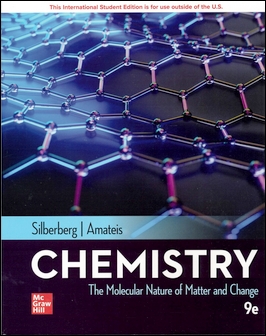書籍分類

Chemistry: The Molecular Nature of Matter and Change 9/e
作者:Martin Silberberg, Patricia Amateis
原價:NT$ 1,800
ISBN:9781260575231
版次:9
年份:2021
出版商:McGraw-Hill
頁數/規格:1264頁/平裝彩色
參考網頁:Chemistry: The Molecular Nature of Matter and Change 9/e
版次:9
年份:2021
出版商:McGraw-Hill
頁數/規格:1264頁/平裝彩色
參考網頁:Chemistry: The Molecular Nature of Matter and Change 9/e
內容介紹 目錄
- Description
Chemistry: The Molecular Nature of Matter and Change by Martin Silberberg and Patricia Amateis has been recognized in the general chemistrymarket as an unparalleled classic. The revision for the ninth edition focusedon continued optimization of the text. To aid in this process, we wereable to use data from literally thousands of student responses to questions inLearnSmart, the adaptive learning system that assesses student knowledge ofcourse content. The data, such as average time spent answering eachquestion and the percentage of students who correctly answered the question onthe first attempt, revealed the learning objectives that students foundparticularly difficult, which we addressed by revising surrounding text oradding additional learning resources such as videos and slideshows. The textstill contains unprecedented macroscopic-to-microscopic molecularillustrations, consistent step-by-step worked exercises in every chapter, andan extensive range of end-of-chapter problems, which provide engagingapplications covering a wide variety of interests, including engineering,medicine, materials, and environmental studies. Changes have been made to thetext and applications throughout to make them more succinct, to the artwork tomake it more teachable and modern, and to the design to make it more simplisticand open.
分類位置:
理工 > 化學/化學工程 > 化學/化學工程其他


